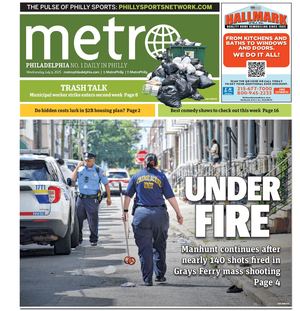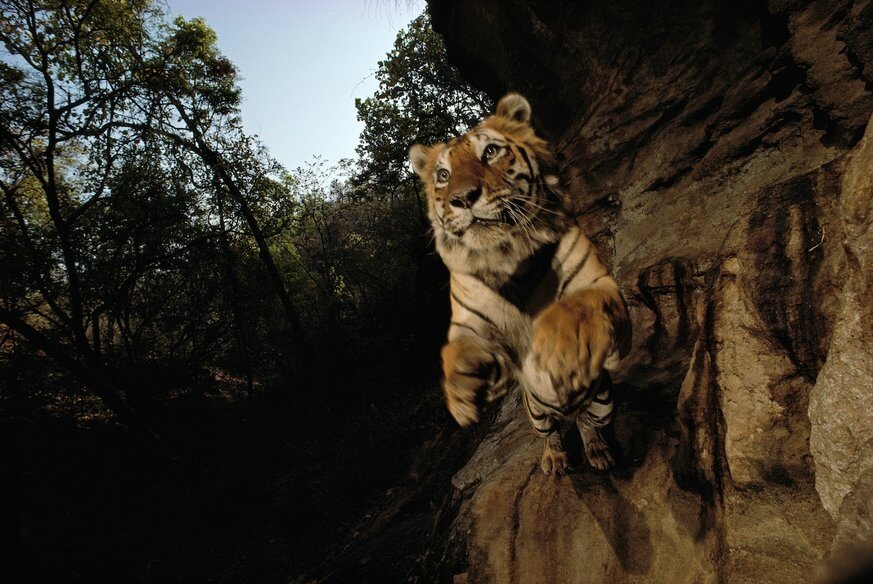Probably the most remarkable photograph in “Wild: Michael Nichols,” the new exhibition that just opened at the Philadelphia Museum of Art (PMA), is a 1996 shot depicting a tiger in mid-pounce, leaping directly at the camera. A veteran wildlife photographer and photojournalist, Michael “Nick” Nichols had long before learned that it was impossible to get close enough to a tiger to grab such an image in the flesh – not to mention the danger such an attempt would put the flesh in.
“Wild cats are secretive,” Nichols explains at the museum preview this past Thursday.
His solution was to set automatic camera traps in well-traveled areas, a technique that still entails substantial risk, and hope for the best. “My job is to put a camera into their world and let them take their own pictures. That takes a lot of effort and you have a lot of failure, but it’s really honest that way. I’m trying to make you feel that these animals are wild. I don’t want to tame an animal with my photograph.”
The Art Museum’s career-spanning exhibition, which coincides with the publication of “A Wild Life,” Melissa Harris’ new biography of Nichols, reveals a lifetime’s worth of living with and coming to understand wild animals in their natural habitats. Through his work for National Geographic and other magazines, Nichols has snapped gorillas and chimps alongside Jane Goodall (who will speak about their experiences at the museum in September), elephants in Kenya, lions in Tanzania, and the natural beauty of Yellowstone National Park and the Grand Canyon.
Originally from Muscle Shoals, Alabama, Nichols trained his eye in art school, where he says the major lesson he learned was to break the rules.
“Photography has a lot of rules, and the only way you can make a great photograph is to break some of those rules. I became a photographer, which is a realist interpretation of the world, but I always wanted to see if I could make it a little bit unreal,” he says.
That unreality, he insists, is always in service of bringing the truth of a moment directly to the viewer. He pointed to a black and white image of conservationist J. Michael Fay at the end of his MegaTransect, a 455-day, 3200-mile trek across Africa. Nichols caught a moment when Fay was simply walking out of a dip in the ocean, wiping the salt water from his face, but with a gesture that looks like a prayer. In that single frame the relief of the strenuous journey comes vividly to life.
“Nick is essentially a great street photographer who finds his beat in the savannah and the forest,” describes curator Peter Barbarie. “These are expressive pictures, filled with movement and breath. They’re not about accuracy; they’re about the life of these beings before him.”
The museum places Nichols’ work in an art-historical context with works from its collection, depictions of the natural world by artists including Rousseau and Brancusi.
“To be here in this museum is something I never dreamed of,” Nichols says, while pointing out that those artists could let their imaginations roam, while his own work required him to accept what nature provided. “I’m an artist here, but as a journalist I couldn’t do everything that I wanted. Photography loses its soul if it’s not honest.”
If you go:
Wild: Michael Nichols
June 27-Sept. 17
Philadelphia Museum of Art
26th Street & Ben Franklin Pkwy.
philamuseum.org




























